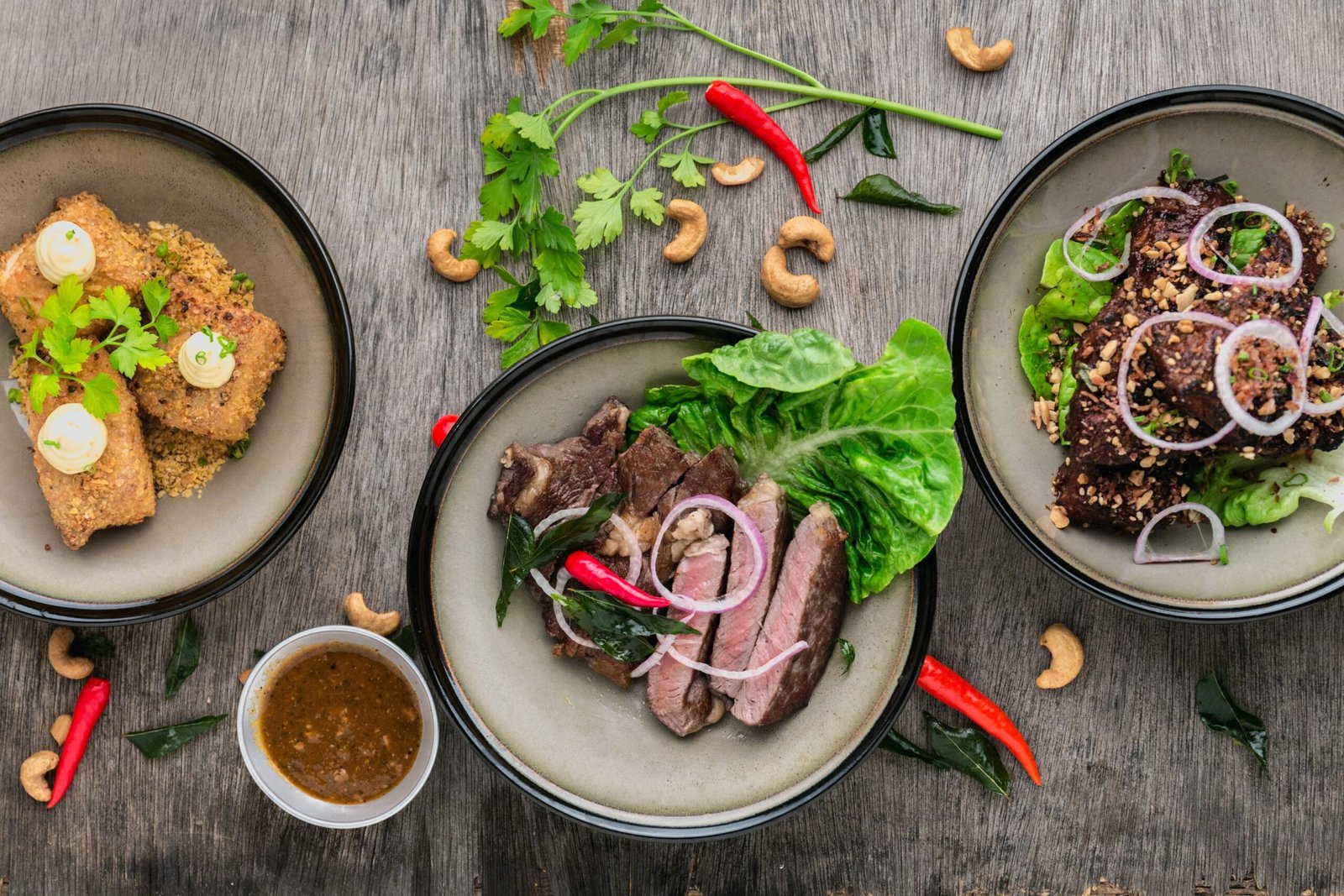Imagine biting into a pastry that is not only delicious but also filled with centuries-old wisdom and cultural heritage. Traditional Korean fermentation techniques are the secret ingredient behind the latest trend in desserts, creating a unique and exciting fusion of flavors. From kimchi-infused ice cream to fermented rice cakes, these innovative creations are captivating taste buds and showcasing the versatility of fermentation in the culinary world. So, get ready to immerse yourself in the captivating world of Korean desserts, where tradition meets innovation, and every bite tells a story.
Traditional Korean Fermentation Techniques
What are traditional Korean fermentation techniques?
Traditional Korean fermentation techniques are age-old methods used to preserve food while intensifying its flavors. Fermentation is a natural process that involves the breakdown of carbohydrates by microorganisms like yeast and bacteria, resulting in the transformation of the food’s texture, taste, and nutritional properties. In Korea, fermentation has been an integral part of culinary traditions for centuries, with various techniques developed and refined over time.
Examples of traditional Korean fermentation techniques
Korea boasts a rich variety of traditional fermentation techniques, each contributing to the distinct flavor profiles found in its cuisine. Some notable examples of traditional Korean fermentation techniques include:
Kimchi Fermentation: Kimchi, a spicy and tangy blend of fermented vegetables, is perhaps the most iconic Korean dish. This fermentation technique involves brining vegetables, such as cabbage and radishes, in a flavorful mixture of garlic, ginger, chili pepper, and other seasonings. This results in a complex and deeply satisfying condiment, enjoyed on its own or as an ingredient in other dishes.
Doenjang and Gochujang Fermentation: Doenjang and Gochujang are two fundamental Korean fermented condiments. Doenjang is a fermented soybean paste, while Gochujang is a spicy fermented chili paste. These pastes are made by adding a grain, such as rice or barley, to soybeans and allowing the mixture to ferment. The result is a strong umami flavor that enhances a wide range of Korean dishes.
Makgeolli Fermentation: Makgeolli is a traditional Korean rice wine that undergoes a milky fermentation process. Made from a mixture of rice, water, and a fermentation starter called nuruk, Makgeolli has a slightly sweet and tangy taste. It is a popular drink enjoyed both on its own and as an ingredient in various cocktails and desserts.
Application of Traditional Korean Fermentation Techniques to Desserts
Introduction to the application of traditional Korean fermentation techniques to desserts
Traditional Korean fermentation techniques, once primarily used for savory dishes, are now being creatively applied to desserts. This culinary trend combines the richness of traditional fermentation with the sweetness and indulgence of desserts, creating unique and innovative flavor experiences. The application of these techniques to desserts not only adds depth and complexity to sweet treats but also showcases the rich cultural heritage of Korean cuisine.
Sourcing traditional Korean ingredients for dessert fermentation
To successfully incorporate traditional Korean fermentation techniques into desserts, it is essential to source authentic Korean ingredients. While some ingredients may be readily available in Korean markets or specialty stores, others may require a bit more effort to find. Local farms and online retailers specializing in Korean ingredients can be excellent sources for procuring the necessary components, such as fermented soybean paste, rice vinegar, or fermented chili flakes. Ensuring the quality and authenticity of these ingredients is crucial to achieve the desired flavor profiles.
Exploring flavor profiles in fermented desserts
The application of traditional Korean fermentation techniques to desserts opens up a world of new and exciting flavor profiles. The natural fermentation process enhances the sweetness of desserts while introducing complex and subtle savory notes. Traditional fermented ingredients like doenjang, gochujang, and makgeolli can be used to infuse desserts with umami, spice, and depth. The combination of these unique flavor elements creates a harmonious balance that elevates the dessert experience to a whole new level.
Health benefits of fermented desserts
In addition to their delicious taste, desserts made using traditional Korean fermentation techniques offer several health benefits. Fermentation not only increases the bioavailability of nutrients but also promotes the growth of beneficial bacteria, which can have a positive impact on gut health. Fermented desserts can be a great source of probiotics, promoting a healthy digestive system. Furthermore, fermented ingredients like soybean paste and rice vinegar are rich in antioxidants and other compounds known for their potential health benefits.
Popular traditional Korean fermented desserts
Traditional Korean fermented desserts have gained popularity both in Korea and around the world. Some of the popular examples include:
Sikhye: Sikhye is a traditional Korean sweet rice beverage made by fermenting cooked rice with malted barley or rice. It has a mildly sweet and refreshing taste, often flavored with pine nuts and garnished with cooked rice grains. Sikhye is commonly enjoyed as a dessert or as a refreshing drink during festive celebrations.
Sujeonggwa: Sujeonggwa is a traditional Korean cinnamon punch made by fermenting dried persimmons with spices and sweeteners. This fermented drink has a unique combination of sweetness, spiciness, and a slight tang. Often served as a dessert beverage, sujeonggwa is also enjoyed as a digestive aid due to its warming properties.
Bingsu: Bingsu is a popular Korean shaved ice dessert that can be customized with a variety of fermented toppings. Traditionally, bingsu features sweetened red beans, known as patbingsu. However, modern variations include fermented ingredients like soybean powder, matcha green tea, or even makgeolli-infused shaved ice. This refreshing dessert is perfect for hot summer days.
Techniques and Recipes for Fermented Desserts
Techniques for fermenting desserts
The process of fermenting desserts involves adapting traditional Korean fermentation techniques to suit the specific requirements of sweet treats. Here are some techniques commonly used for fermenting desserts:
Starter Cultures: Just like in traditional fermentation, starter cultures or fermentation agents are used to kick-start the fermentation process in desserts. These can include natural yeasts, bacteria, or even specific strains of koji mold, depending on the desired flavor and texture.
Controlled Temperature: Fermentation requires stable and controlled temperatures for optimal results. Desserts that undergo fermentation may need to be placed in a warm and controlled environment to encourage the growth of beneficial microorganisms while preventing the growth of harmful bacteria.
Time and Patience: Fermentation is not an instant process and often requires several days or even weeks to achieve the desired flavor development. Desserts that undergo fermentation need to be given enough time for the fermentation process to occur fully.
Traditional Korean fermented dessert recipes
Here are a few traditional Korean fermented dessert recipes that demonstrate the application of fermentation techniques:
Yakgwa: Yakgwa is a traditional Korean deep-fried dessert made with fermented rice wine and honey. The dough is flavored with ginger and sesame oil, shaped into intricate patterns, and deep-fried until golden brown. This dessert has a delicate balance of sweetness and savory notes.
Jeungpyeon: Jeungpyeon is a traditional Korean rice cake made by fermenting rice flour with yeast. The dough is steamed to create a light and fluffy cake with a slightly tangy taste. Jeungpyeon can be enjoyed on its own or used as a base for other desserts.
Injeolmi: Injeolmi is a popular Korean sweet rice cake made by pounding freshly steamed glutinous rice and coating it with fermented soybean powder. The result is a chewy and nutty dessert with a satisfying texture.
Creative variations of traditional fermented desserts
Modern chefs and dessert enthusiasts have taken traditional Korean fermented desserts to new creative heights by experimenting with unique flavor combinations and presentation styles. Some exciting variations of traditional fermented desserts include:
Matcha Doenjang Cheesecake: This fusion dessert combines the creamy indulgence of cheesecake with the savory depth of doenjang. The tangy and rich flavors of the cheesecake are enhanced by the umami notes of fermented soybean paste, creating a unique and unforgettable dessert experience.
Makgeolli Ice Cream: Makgeolli’s natural sweetness and slight tanginess make it an excellent ingredient for creating refreshing and slightly tangy ice cream. This innovative variation of traditional fermented dessert highlights the versatility of makgeolli and its ability to enhance desserts in unexpected ways.
Gochujang Chocolate Truffles: Gochujang’s distinctive heat and complex flavor profile can add a surprising twist to traditional chocolate truffles. The spicy kick of gochujang complements the rich sweetness of chocolate, creating a bold and irresistible treat for those who appreciate unique flavor combinations.
Innovative Uses of Traditional Fermentation Techniques in Modern Desserts
Exploring fusion desserts with traditional Korean fermentation techniques
The incorporation of traditional Korean fermentation techniques into fusion desserts opens up a whole new world of culinary possibilities. By combining the rich heritage of Korean cuisine with other culinary traditions, chefs can create innovative and exciting desserts that showcase the best of both worlds. Whether it’s a kimchi-infused chocolate cake or a yerba mate kombucha sorbet, fusion desserts allow for incredible creativity and surprising flavor combinations.
Incorporating fermented ingredients in Western dessert recipes
Western dessert recipes can also benefit from the incorporation of fermented ingredients. The complex flavors and natural sweetness achieved through fermentation can add depth and complexity to traditional Western desserts like cakes, cookies, and pastries. Using fermented ingredients like miso, vinegar, or sourdough starter in Western recipes can create unique flavor profiles that elevate these desserts to new levels of sophistication and intrigue.
Showcasing traditional Korean flavors in unique dessert presentations
Traditional Korean flavors can be presented in fresh and exciting ways to captivate the modern dessert enthusiast. Dessert tasting menus or special themed desserts can feature traditional Korean fermented ingredients as the focal point, allowing diners to experience and appreciate the depth of flavor and cultural significance associated with Korean cuisine. Additionally, incorporating traditional Korean dessert presentation techniques, such as intricate plating or the use of traditional tableware, can further enhance the overall dessert experience.

Influence of Traditional Korean Fermentation Techniques on International Dessert Trends
Influence of Korean fermentation techniques on global dessert trends
Traditional Korean fermentation techniques have had a significant impact on international dessert trends, inspiring chefs and culinary enthusiasts worldwide to explore the world of fermentation. The umami-rich flavors, unique texture profiles, and health benefits associated with fermented desserts have captured the attention of food enthusiasts. As a result, fermentation has become a prominent trend in global dessert innovation, with chefs from various culinary backgrounds experimenting with different fermentation techniques to create innovative and memorable desserts.
Adaptation of traditional Korean fermentation techniques in other cultures
The allure of traditional Korean fermentation techniques has transcended cultural boundaries, leading to the adaptation and incorporation of these techniques in other culinary traditions. Fermentation has long been a part of many cuisines worldwide, and the influence of traditional Korean techniques is evident in the increasing use of fermented ingredients in dishes and desserts across different cultures. The natural synergy between traditional Korean fermentation techniques and other culinary traditions creates exciting cross-cultural culinary experiences.
The rise of Korean-inspired dessert shops worldwide
The growing popularity of Korean cuisine, including traditional fermented desserts, has led to the emergence of Korean-inspired dessert shops worldwide. These establishments specialize in creating desserts that showcase the unique flavors and techniques of Korea, attracting both Korean-expatriate communities and a diverse range of dessert enthusiasts. From kimchi-infused pastries to matcha-flavored rice cakes, these dessert shops offer a delightful exploration of traditional Korean flavors in a modern and accessible setting.
Future Directions for Traditional Korean Fermentation Techniques in Desserts
Innovative research and experimentation in dessert fermentation
As the popularity of fermented desserts continues to grow, there is immense potential for innovative research and experimentation in the field of dessert fermentation. Chefs, food scientists, and culinary enthusiasts can collaborate to explore new fermentation techniques, develop unique flavor combinations, and discover novel applications for traditional Korean fermentation methods. This ongoing research and experimentation will push the boundaries of dessert creation and contribute to the continued evolution of traditional Korean fermentation techniques.
Culinary collaborations to promote traditional Korean desserts
Collaborations between Korean chefs, dessert experts, and culinary influencers can help promote traditional Korean desserts and fermentation techniques on a global scale. By organizing dessert-focused events, workshops, and tastings, these collaborations can showcase the rich heritage of Korean cuisine, educate the public about traditional fermentation techniques, and inspire other chefs and home cooks to incorporate these methods into their own creations. These partnerships can foster a deeper appreciation for Korean desserts and elevate their presence in the international culinary scene.
Preservation and promotion of traditional fermentation techniques
It is essential to preserve and promote traditional Korean fermentation techniques to ensure their continued relevance and cultural significance. Culinary institutions, organizations, and government bodies can work together to document and safeguard these techniques through research, publications, and educational programs. By raising awareness about the value and importance of traditional fermentation, efforts can be made to preserve these techniques for future generations and ensure their continued contribution to the world of desserts.
In conclusion, traditional Korean fermentation techniques have found a new home in the world of desserts. The application of these techniques opens up a world of new and exciting flavor profiles, health benefits, and culinary possibilities. Whether it’s incorporating fermented ingredients in Western recipes or creating fusion desserts that bridge culinary traditions, traditional Korean fermentation techniques have left an indelible mark on the international dessert scene. As the popularity of fermented desserts grows, it is crucial to continue exploring, preserving, and promoting these techniques to celebrate the rich cultural heritage of Korean cuisine and inspire further innovation in the world of desserts.



